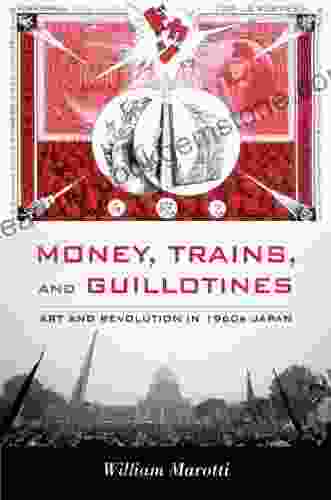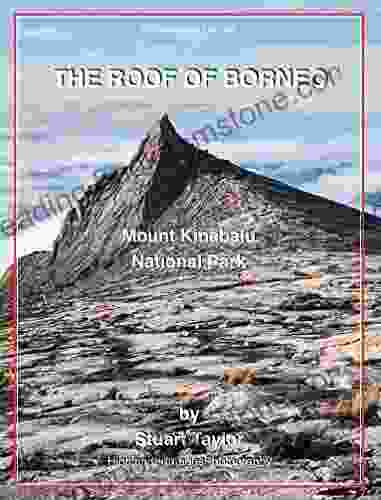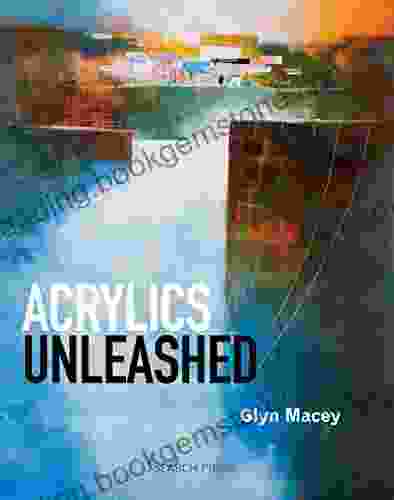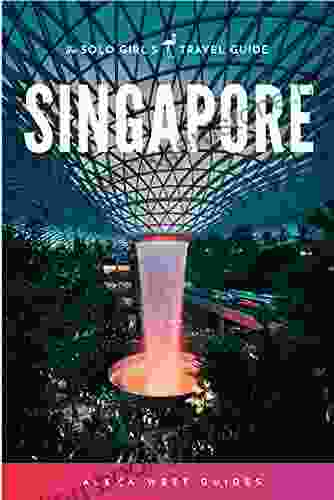Art and Revolution in 1960s Japan: Asia Pacific's Seismic Cultural Awakening

5 out of 5
| Language | : | English |
| File size | : | 29032 KB |
| Text-to-Speech | : | Enabled |
| Screen Reader | : | Supported |
| Enhanced typesetting | : | Enabled |
| Print length | : | 440 pages |
A Crucible of Change
The 1960s in Japan was a tumultuous decade marked by rapid economic growth, social transformation, and political upheaval. This period of intense change ignited a profound cultural renaissance that reverberated through the world of art. Japanese artists, fueled by a spirit of rebellion and experimentation, challenged artistic conventions and ignited a revolution that forever altered the trajectory of contemporary art.
The Radical Gutai Group
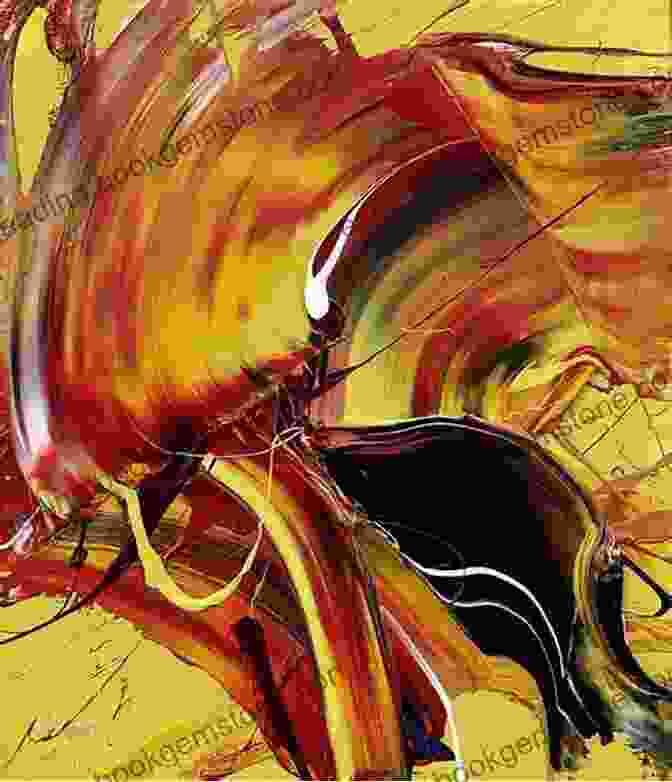
Founded in 1954, the Gutai Group emerged as a pioneering force in postwar Japanese art. Led by artist Jiro Yoshihara, the group rejected traditional notions of painting and sculpture, embracing experimentation with new materials, techniques, and forms.
Gutai artists pushed the boundaries of abstraction, creating dynamic, gestural works that defied categorization. They explored the physicality of art, incorporating elements of performance, installation, and environmental art. Artists like Kazuo Shiraga created immersive "happenings" where they painted with their bodies, while Shozo Shimamoto experimented with gunpowder and fire in his explosive canvases.
The Anti-Establishment Fluxus Movement
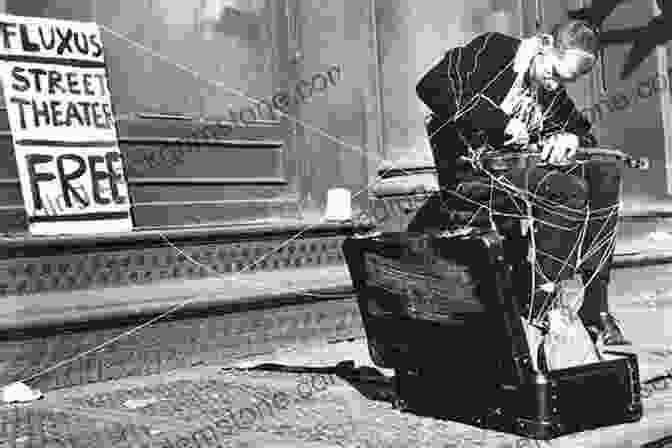
Concurrent with the Gutai Group's avant-garde experiments, the Fluxus movement emerged in Japan as a radical challenge to the established art world. Founded by Lithuanian-born artist George Maciunas in 1962, Fluxus sought to break down the barriers between art and life, embracing anti-art and anti-commercialism.
Fluxus artists staged performances, created ephemeral events, and produced objects that blurred the lines between art and everyday life. They challenged the traditional hierarchy of art, advocating for the democratization of artistic expression. Japanese Fluxus artists like Yoko Ono and Nam June Paik became prominent figures in the movement, using their art to critique social and political issues.
The Minimalist Mono-ha
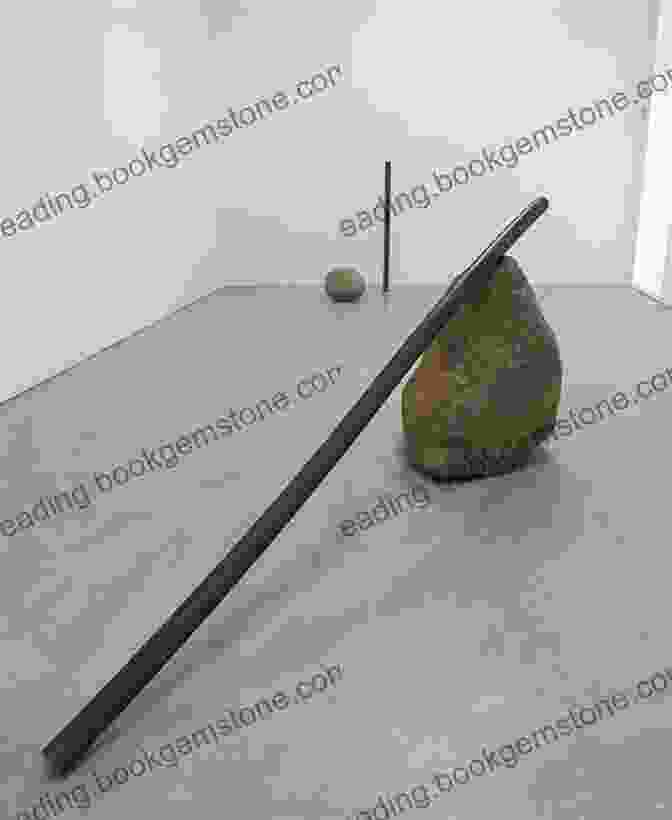
In the late 1960s, a new artistic movement emerged in Japan known as Mono-ha, meaning "School of Things." Mono-ha artists sought to explore the intrinsic qualities of materials and objects, creating minimalist works that highlighted the beauty and significance of the everyday.
Mono-ha artists used natural materials like rocks, wood, and soil, arranging them in simple, often unadorned compositions. They emphasized the interaction between the object and its environment, inviting viewers to contemplate the nature of reality and the ephemeral nature of existence. Artists like Lee Ufan and Nobuo Sekine became leading figures of the Mono-ha movement, influencing contemporary art worldwide.
A Global Impact
The artistic revolution that took place in 1960s Japan had a profound impact on the global art scene. Gutai's radical experimentation influenced the development of abstract expressionism and performance art in the West. Fluxus's anti-establishment stance challenged traditional notions of art and paved the way for conceptual art and installation art.
Japanese artists like Yayoi Kusama and Yoko Ono gained international recognition for their groundbreaking work. Kusama's immersive installations and psychedelic paintings became iconic symbols of the avant-garde, while Ono's performative and conceptual art explored themes of peace, feminism, and the nature of identity.
An Enduring Legacy
The artistic revolution of 1960s Japan continues to resonate in contemporary art practice. The experimental spirit and radical ideas of Gutai, Fluxus, and Mono-ha have influenced generations of artists worldwide.
Today, Japanese art remains a vibrant and dynamic force in the global art landscape, building upon the legacy of the 1960s and embracing new forms of artistic expression. The seismic cultural awakening that occurred during this pivotal decade has left an enduring mark on the world of art and continues to inspire and challenge artists and audiences alike.
5 out of 5
| Language | : | English |
| File size | : | 29032 KB |
| Text-to-Speech | : | Enabled |
| Screen Reader | : | Supported |
| Enhanced typesetting | : | Enabled |
| Print length | : | 440 pages |
Do you want to contribute by writing guest posts on this blog?
Please contact us and send us a resume of previous articles that you have written.
 Best Book
Best Book Page Flip
Page Flip Bookshelf
Bookshelf Literary loom
Literary loom Chapter
Chapter Bookish
Bookish PageTurner
PageTurner Bibliophile
Bibliophile Story
Story Inkwell
Inkwell Bookworm
Bookworm Labyrinth
Labyrinth Plot Twist
Plot Twist Prose
Prose Paperback
Paperback Storyteller
Storyteller Sanctuary
Sanctuary Fiction
Fiction Reading
Reading Chronicle
Chronicle Read
Read Belinda Smith Cicarella
Belinda Smith Cicarella Laurie Birnsteel
Laurie Birnsteel Harold Holzer
Harold Holzer Akaisha Kaderli
Akaisha Kaderli Alex White
Alex White Alejandro Zambrano Sevillano
Alejandro Zambrano Sevillano Alistair Urquhart
Alistair Urquhart John French
John French Anne Vipond
Anne Vipond Gregory Benford
Gregory Benford Gay Talese
Gay Talese Gerald L Kooyman
Gerald L Kooyman Matthew Bourne
Matthew Bourne Winifred Brown
Winifred Brown Kelly Bowen
Kelly Bowen Jack Jewers
Jack Jewers Aki Choklat
Aki Choklat Pam Cook
Pam Cook Beth Alison Maloney
Beth Alison Maloney Kirsten Weiss
Kirsten Weiss Allison Moore
Allison Moore Eddie R Hicks
Eddie R Hicks Paul Clark
Paul Clark Bill Dixon
Bill Dixon Sarah Spencer
Sarah Spencer Alejandro Jodorowsky
Alejandro Jodorowsky Jessica Fanigliulo
Jessica Fanigliulo John Varley
John Varley Matt Dickinson
Matt Dickinson Alexa Martin
Alexa Martin Alex Robinson
Alex Robinson Peter Warner
Peter Warner Kimiko Kitani
Kimiko Kitani Julian Hoxter
Julian Hoxter Roberto Lovato
Roberto Lovato Alan Grainger
Alan Grainger Paula Marantz Cohen
Paula Marantz Cohen Rich Polanco
Rich Polanco Michael Sayman
Michael Sayman Matt Ortile
Matt Ortile Ted Okuda
Ted Okuda Alex Kotlowitz
Alex Kotlowitz Danielle Donaldson
Danielle Donaldson Patrick J Flannigan
Patrick J Flannigan Alex Grey
Alex Grey Osman Yousefzada
Osman Yousefzada Lynsey Addario
Lynsey Addario Robin Meloy Goldsby
Robin Meloy Goldsby Adele Wagstaff
Adele Wagstaff Alan Smith
Alan Smith Cecil Jenkins
Cecil Jenkins Michael Weeks
Michael Weeks Brad Thor
Brad Thor Garret Romaine
Garret Romaine Fluent In Korean
Fluent In Korean Adrian Dater
Adrian Dater Gail Pool
Gail Pool Alex Kava
Alex Kava William Golding
William Golding Rachel Mcmillan
Rachel Mcmillan Alex Tannen
Alex Tannen Mark Panek
Mark Panek Rocio Carvajal
Rocio Carvajal Learning Through Activities
Learning Through Activities Tim Bonyhady
Tim Bonyhady Irmgard Bartenieff
Irmgard Bartenieff Giannalberto Bendazzi
Giannalberto Bendazzi Robert Clark
Robert Clark Thomas Huhti
Thomas Huhti Adrien Gombeaud
Adrien Gombeaud Luciano Thomazelli
Luciano Thomazelli Rachael Cerrotti
Rachael Cerrotti Nihon Vogue
Nihon Vogue John Phillip Santos
John Phillip Santos Akiva Teddy Macleod
Akiva Teddy Macleod Julie Collins
Julie Collins Tamara Thiessen
Tamara Thiessen Emilie Conrad Da Oud
Emilie Conrad Da Oud Tom Weaver
Tom Weaver Geronimo
Geronimo Heidi Moksnes
Heidi Moksnes Lon Varnadore
Lon Varnadore Dominique Dupuy
Dominique Dupuy Michelle Loucadoux
Michelle Loucadoux Cheech Marin
Cheech Marin Brien Foerster
Brien Foerster Christopher P Jones
Christopher P Jones Mary Monroe
Mary Monroe Adrienne Keene
Adrienne Keene Sean Hall
Sean Hall Margaret Mitchell
Margaret Mitchell Karl Beecher
Karl Beecher John Perrier
John Perrier Paul J Pastor
Paul J Pastor Alex Danchev
Alex Danchev Diane Mierzwik
Diane Mierzwik Hayley Mills
Hayley Mills Guy Kawasaki
Guy Kawasaki Yahtzee Croshaw
Yahtzee Croshaw Stuart Thornton
Stuart Thornton Dustin Lynx
Dustin Lynx Christian Cameron
Christian Cameron Ramy Vance
Ramy Vance Tara Ellis
Tara Ellis Alejandra Viscarra
Alejandra Viscarra 3rd Edition Kindle Edition
3rd Edition Kindle Edition Charles Mccormac
Charles Mccormac Alex Hibbert
Alex Hibbert Greg Sestero
Greg Sestero F Sehnaz Bac
F Sehnaz Bac Justin Monroe
Justin Monroe Paul Austin
Paul Austin Michael Connelly
Michael Connelly Fiona Maccarthy
Fiona Maccarthy Mia P Manansala
Mia P Manansala Akiko Busch
Akiko Busch Nancy Milford
Nancy Milford Dale Olausen
Dale Olausen Huma Abedin
Huma Abedin Aurora Levins Morales
Aurora Levins Morales Matthew Reilly
Matthew Reilly Louise Erdrich
Louise Erdrich Tod Benoit
Tod Benoit Mark William Shaw
Mark William Shaw Howexpert Press
Howexpert Press Mariusz Krukowski
Mariusz Krukowski Christoph Brueck
Christoph Brueck Jeanne Filler Scott
Jeanne Filler Scott Michael Anderson
Michael Anderson Akwaeke Emezi
Akwaeke Emezi Alan Rabinowitz
Alan Rabinowitz Amy Tan
Amy Tan Jesse Wente
Jesse Wente Azalea Ellis
Azalea Ellis A J Liebling
A J Liebling Giovanni Iannoni
Giovanni Iannoni Markus S Agerer
Markus S Agerer A R Corbin
A R Corbin Sjeng Scheijen
Sjeng Scheijen Kim E Nielsen
Kim E Nielsen John Gold
John Gold Andrew Solomon
Andrew Solomon Luke F D Marsden
Luke F D Marsden Gerhard Haase Hindenberg
Gerhard Haase Hindenberg Elizabeth Mcpherson
Elizabeth Mcpherson Alberto Manguel
Alberto Manguel Inman Learning
Inman Learning Georgia Purdom
Georgia Purdom Rhonda K Garelick
Rhonda K Garelick Alan Colquhoun
Alan Colquhoun St Paul S Greek Orthodox Church
St Paul S Greek Orthodox Church Yvvette Edwards
Yvvette Edwards Eric Goldberg
Eric Goldberg Peter Carey
Peter Carey Nikki Giovanni
Nikki Giovanni Bobby Love
Bobby Love Kerry Trout
Kerry Trout Wes Mcdowell
Wes Mcdowell Soon Y Warren
Soon Y Warren Aleksandr Solzhenitsyn
Aleksandr Solzhenitsyn Laurie Schneider Adams
Laurie Schneider Adams Bill Manley
Bill Manley Robert Byron
Robert Byron Michele Bousquet
Michele Bousquet Sarah Ferguson
Sarah Ferguson David Morrell
David Morrell Alan Bachmann
Alan Bachmann A D Davies
A D Davies Nikolaus Julius Weichselbaumer
Nikolaus Julius Weichselbaumer Akira Kurosawa
Akira Kurosawa Daniel Kay Hertz
Daniel Kay Hertz Dima Ghawi
Dima Ghawi Joseph Campbell
Joseph Campbell Eliane Strosberg
Eliane Strosberg Alan Veale
Alan Veale J Pal
J Pal Claudia Rankine
Claudia Rankine Hans Keilson
Hans Keilson Dave Addey
Dave Addey Alan Sanders
Alan Sanders Richard Poulin
Richard Poulin Anne Macleod
Anne Macleod Chip Kidd
Chip Kidd Alex Dudok De Wit
Alex Dudok De Wit Massoud Hayoun
Massoud Hayoun Gary Zacny
Gary Zacny Abdulrazak Gurnah
Abdulrazak Gurnah Adam Nayman
Adam Nayman Elizabeth Holmes
Elizabeth Holmes Barbara Brownie
Barbara Brownie Alex Gough
Alex Gough M Osman Siddique
M Osman Siddique G J Ogden
G J Ogden Allison Pataki
Allison Pataki Chloe Garner
Chloe Garner Alex Zadeh
Alex Zadeh C M Carney
C M Carney Sarah Crafts
Sarah Crafts A J Alonzo Wind
A J Alonzo Wind Harlow Robinson
Harlow Robinson Josh Golding
Josh Golding Albert Samaha
Albert Samaha Nicki Grace
Nicki Grace Richard F Weyand
Richard F Weyand Misba
Misba 1st Edition Kindle Edition
1st Edition Kindle Edition Despina Stratigakos
Despina Stratigakos Edmund Morris
Edmund Morris Simon Callow
Simon Callow Paul Curry
Paul Curry Christopher G Nuttall
Christopher G Nuttall Sandie Heron
Sandie Heron Joan Druett
Joan Druett A J Verdelle
A J Verdelle Jack Anderson
Jack Anderson Herman Wouk
Herman Wouk Colette Pitcher
Colette Pitcher Laurel Hart
Laurel Hart Randy Palmer
Randy Palmer George Monbiot
George Monbiot Lee Craker
Lee Craker Jeffrey Spivak
Jeffrey Spivak Adrian Tchaikovsky
Adrian Tchaikovsky Josh Holliday
Josh Holliday Stefan Zweig
Stefan Zweig Tupac Shakur
Tupac Shakur Jennie Allen
Jennie Allen Bob Rohm
Bob Rohm Terry Barrett
Terry Barrett Alastair Reynolds
Alastair Reynolds Frank Catalano
Frank Catalano Nancy Marguerite Anderson
Nancy Marguerite Anderson Amy Latta
Amy Latta Faith Hunter
Faith Hunter K J Gillenwater
K J Gillenwater Ricardo Victoria
Ricardo Victoria Aeham Ahmad
Aeham Ahmad Amanda Gorman
Amanda Gorman Katie Daisy
Katie Daisy Danny Newman
Danny Newman Charles De Lint
Charles De Lint George Smith
George Smith Margaret Shepherd
Margaret Shepherd My Daily Spanish
My Daily Spanish Grace Lees Maffei
Grace Lees Maffei Franklyn Griffiths
Franklyn Griffiths Ninni Holmqvist
Ninni Holmqvist Peter Gethers
Peter Gethers Keila Rowe
Keila Rowe Al Sharpton
Al Sharpton Gregory Michie
Gregory Michie Paul Hadden
Paul Hadden Alex Hillkurtz
Alex Hillkurtz Torben Landskrone
Torben Landskrone Jeffery H Haskell
Jeffery H Haskell George Bernard Shaw
George Bernard Shaw Wakefield Poole
Wakefield Poole Jason Cordova
Jason Cordova Kazuaki Tanahashi
Kazuaki Tanahashi Alastair Campbell
Alastair Campbell Aisha Sabatini Sloan
Aisha Sabatini Sloan Ann Torrence
Ann Torrence Ivy Mix
Ivy Mix Glyn Macey
Glyn Macey James S A Corey
James S A Corey Ajax Lygan
Ajax Lygan Felix R Savage
Felix R Savage Afua Hirsch
Afua Hirsch V A Lewis
V A Lewis Antony Sher
Antony Sher Malka Older
Malka Older Alan Laycock
Alan Laycock Antonio Centeno
Antonio Centeno Ava Reid
Ava Reid Susan Evenson
Susan Evenson David Conyers
David Conyers Adam Roberts
Adam Roberts Alberlin Torres
Alberlin Torres Gareth C Meadows
Gareth C Meadows Fanny Kelly
Fanny Kelly Alex Foster
Alex Foster Laura Galloway
Laura Galloway Tom Swimm
Tom Swimm Alain Kerzoncuf
Alain Kerzoncuf Maturin Murray Ballou
Maturin Murray Ballou Alastair Vere Nicoll
Alastair Vere Nicoll Alex Berenson
Alex Berenson Stefano Mancuso
Stefano Mancuso Rudy Rucker
Rudy Rucker Roxana Robinson
Roxana Robinson Donna Digiuseppe
Donna Digiuseppe Julian Bell
Julian Bell Kindle Edition
Kindle Edition Francisco Martin Rayo
Francisco Martin Rayo Aleksandar Nedeljkovic
Aleksandar Nedeljkovic Albert Blasco Peris
Albert Blasco Peris Ann Mah
Ann Mah J R R Tolkien
J R R Tolkien Agatha Christie
Agatha Christie Jean Pederson
Jean Pederson N Dia Rae
N Dia Rae Anne Glenconner
Anne Glenconner Sabrina Devonshire
Sabrina Devonshire Jennifer Egan
Jennifer Egan Ken Layne
Ken Layne Martin Mosebach
Martin Mosebach Monica Russel
Monica Russel Michael J Fox
Michael J Fox S Elizabeth
S Elizabeth Shelli Marie
Shelli Marie Abdul El Sayed
Abdul El Sayed L Loren
L Loren Bernard Diederich
Bernard Diederich Juhea Kim
Juhea Kim Shaul Kelner
Shaul Kelner Magunta Dayakar
Magunta Dayakar Michael Reyes
Michael Reyes E C Godhand
E C Godhand Stephen Bodio
Stephen Bodio Alex Jennings
Alex Jennings Robert Arp
Robert Arp Alicia Drake
Alicia Drake Aleron Kong
Aleron Kong Rob Stone
Rob Stone Albert Corbeto
Albert Corbeto Jessica Lee
Jessica Lee Natasha Boyd
Natasha Boyd Richard Doetsch
Richard Doetsch Cassia Cogger
Cassia Cogger Ally Morin
Ally Morin Terez Mertes Rose
Terez Mertes Rose Michael Samerdyke
Michael Samerdyke Alan Murphy
Alan Murphy Arlene Croce
Arlene Croce Alec Potrero
Alec Potrero Noam Oswin
Noam Oswin Ntozake Shange
Ntozake Shange Emily Maker
Emily Maker Laurieann Gibson
Laurieann Gibson Viola Shipman
Viola Shipman Aleksandar Hemon
Aleksandar Hemon Cherrie Moraga
Cherrie Moraga Neil Wilson
Neil Wilson Michael Booth
Michael Booth Fadel Abuelula
Fadel Abuelula Anais Granofsky
Anais Granofsky Kayleigh Mcenany
Kayleigh Mcenany Tyler Green
Tyler Green Robyn Blakeman
Robyn Blakeman Aimee Alexander
Aimee Alexander Aileen Bordman
Aileen Bordman Smashing Magazine
Smashing Magazine Joseph Kim
Joseph Kim Betty Reid Soskin
Betty Reid Soskin Troy Taylor
Troy Taylor Alan Carr
Alan Carr Jim Hinckley
Jim Hinckley D Rus
D Rus Eden Dawn
Eden Dawn Robert M Kerns
Robert M Kerns Alex Tizon
Alex Tizon James Willis
James Willis Geert Mak
Geert Mak Lawrence F Lihosit
Lawrence F Lihosit Lavonne Mueller
Lavonne Mueller Mary Brooks Picken
Mary Brooks Picken Richard Lloyd Parry
Richard Lloyd Parry A K Duboff
A K Duboff Ak Turner
Ak Turner Graham Mcneill
Graham Mcneill Charles Chipiez
Charles Chipiez Junheng Li
Junheng Li Roland Nyns
Roland Nyns Ella Blake
Ella Blake Chimamanda Ngozi Adichie
Chimamanda Ngozi Adichie Gary Jennings
Gary Jennings Scott Bukatman
Scott Bukatman R J Patterson
R J Patterson Anthony Doerr
Anthony Doerr Alan Dean Foster
Alan Dean Foster Bernard Cornwell
Bernard Cornwell Ben D Over
Ben D Over James Baldwin
James Baldwin Mary Karr
Mary Karr Anita Friedman
Anita Friedman John Ingledew
John Ingledew Marco Leonel Garcia Gonzalez
Marco Leonel Garcia Gonzalez Philip Norman
Philip Norman Charlene Tarbox
Charlene Tarbox Rosa Park
Rosa Park Geoff Hann
Geoff Hann Bradley Wright
Bradley Wright Aimee Nezhukumatathil
Aimee Nezhukumatathil Frances Kai Hwa Wang
Frances Kai Hwa Wang Erika Hecht
Erika Hecht Alda Sigmundsdottir
Alda Sigmundsdottir Lee Goldberg
Lee Goldberg A E Filby
A E Filby Candida R Moss
Candida R Moss Robert Marshall
Robert Marshall Ginger Zee
Ginger Zee Alan Verskin
Alan Verskin Greg Jenkins
Greg Jenkins Timothy Samara
Timothy Samara Brenda Barrett
Brenda Barrett Herman Melville
Herman Melville Hob Osterlund
Hob Osterlund Cynthia D Yoder
Cynthia D Yoder Judy A Bernstein
Judy A Bernstein Lauren D Schmalz
Lauren D Schmalz Keisha Ervin
Keisha Ervin Fiona Humberstone
Fiona Humberstone Living Languages
Living Languages Al Davidson
Al Davidson Sarah Polley
Sarah Polley Judith M Heimann
Judith M Heimann Francis M Higman
Francis M Higman Jennifer Sewing
Jennifer Sewing Danie Ware
Danie Ware Peter Samuel
Peter Samuel Armond T Joyce
Armond T Joyce Katja Schmitt
Katja Schmitt J D Adams
J D Adams Bart Rulon
Bart Rulon Alan Jacobson
Alan Jacobson Marco Livingstone
Marco Livingstone Ann Maclean
Ann Maclean Masahiro Kasahara
Masahiro Kasahara Sherry Turkle
Sherry Turkle Mark Christopher Weber
Mark Christopher Weber Heather Hutchison
Heather Hutchison Eileen Sorg
Eileen Sorg Craig Johnson
Craig Johnson Jack L Grossman
Jack L Grossman P T Books
P T Books Tom Scocca
Tom Scocca Jeff Lieberman
Jeff Lieberman Alfons Kaiser
Alfons Kaiser Christian Stoll
Christian Stoll C M Muller
C M Muller Stephen Davis
Stephen Davis Adrien Clautrier
Adrien Clautrier William C Meadows
William C Meadows Tracy Michaud
Tracy Michaud Alecia J
Alecia J Linda Bloomfield
Linda Bloomfield Rian Hughes
Rian Hughes Adele P Margolis
Adele P Margolis Alex Wagner
Alex Wagner Jennifer Lilya
Jennifer Lilya Vinny Sagoo
Vinny Sagoo Richard Ayoade
Richard Ayoade Max Eisen
Max Eisen Evanna Lynch
Evanna Lynch Aer Ki Jyr
Aer Ki Jyr Peter Gray
Peter Gray A J Diamond
A J Diamond Al Saadiq Banks
Al Saadiq Banks Seth Kugel
Seth Kugel Siddharth Anbalagan
Siddharth Anbalagan Stuart Taylor
Stuart Taylor Mary Ann Shaffer
Mary Ann Shaffer Andy Steves
Andy Steves C N Phillips
C N Phillips Alex Albrinck
Alex Albrinck A J Markam
A J Markam Naughty Dog
Naughty Dog Harry Thurston
Harry Thurston Kathleen Brady
Kathleen Brady William Gaskill
William Gaskill Roger Bennett
Roger Bennett Alexa West
Alexa West Eric Sprinkle
Eric Sprinkle Sara Barnes
Sara Barnes Tom Dunkel
Tom Dunkel Saleem H Ali
Saleem H Ali Samuel R Delany
Samuel R Delany Alan M Davis
Alan M Davis Russell Staiff
Russell Staiff Geninne Zlatkis
Geninne Zlatkis Albert Woodfox
Albert Woodfox Martin Edge
Martin Edge Don Yaeger
Don Yaeger Tim Lawrence
Tim Lawrence Reshonda Tate Billingsley
Reshonda Tate Billingsley Afia Atakora
Afia Atakora Marian Filar
Marian Filar Amanda Lawrence
Amanda Lawrence Thomas Geve
Thomas Geve John Gonzalez
John Gonzalez Jane Patrick
Jane Patrick Rozsika Parker
Rozsika Parker Samantha Downing
Samantha Downing Adeline Lim
Adeline Lim Ed Miller
Ed Miller Paul Hallas
Paul Hallas Nancy Beiman
Nancy Beiman Tom Wood
Tom Wood Anne Thomas Soffee
Anne Thomas Soffee Robert Condon
Robert Condon Alex Moore
Alex Moore Nicolas Sellens
Nicolas Sellens Alan Maimon
Alan Maimon Anna M Church
Anna M Church John Maloof
John Maloof Haroon Moghul
Haroon Moghul Richard Hunt
Richard Hunt Andrew Morton
Andrew Morton Scott Harwood
Scott Harwood Lama Rod Owens
Lama Rod Owens Veronica Sekules
Veronica Sekules Peter Burke
Peter Burke Dave Cornthwaite
Dave Cornthwaite Ella Frances Sanders
Ella Frances Sanders D K Holmberg
D K Holmberg Alex Kerr
Alex Kerr
Light bulbAdvertise smarter! Our strategic ad space ensures maximum exposure. Reserve your spot today!

 Shane BlairDrowning: A Gripping Sci-Fi Mystery Thriller That Will Keep You on the Edge...
Shane BlairDrowning: A Gripping Sci-Fi Mystery Thriller That Will Keep You on the Edge...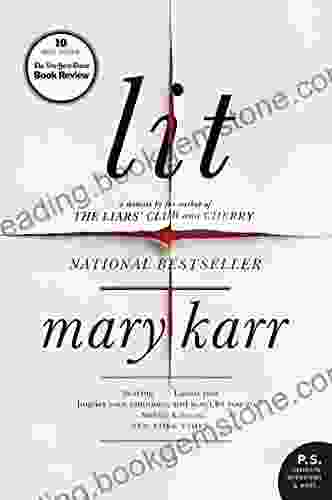
 Walter SimmonsUnveiling the Literary Tapestry of Lit Memoir: A Journey of Self-Discovery...
Walter SimmonsUnveiling the Literary Tapestry of Lit Memoir: A Journey of Self-Discovery... Garrett BellFollow ·12.2k
Garrett BellFollow ·12.2k Gabriel MistralFollow ·14.5k
Gabriel MistralFollow ·14.5k Max TurnerFollow ·13.9k
Max TurnerFollow ·13.9k John KeatsFollow ·16.2k
John KeatsFollow ·16.2k Leo TolstoyFollow ·10.6k
Leo TolstoyFollow ·10.6k Percy Bysshe ShelleyFollow ·7.8k
Percy Bysshe ShelleyFollow ·7.8k Lucas ReedFollow ·19.1k
Lucas ReedFollow ·19.1k Jackson HayesFollow ·9.4k
Jackson HayesFollow ·9.4k
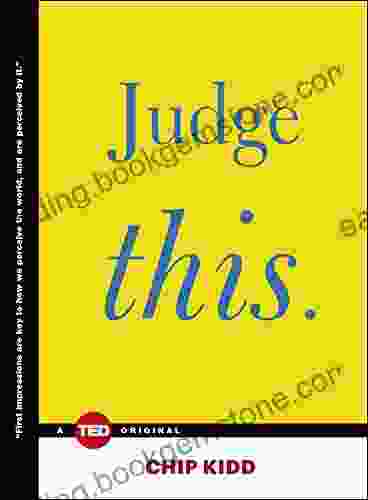
 Stephen King
Stephen KingJudge This: The Unforgettable Book Covers of Chip Kidd
Chip Kidd is one of the most...

 Curtis Stewart
Curtis StewartSovereignty, Security, and Stewardship: Interwoven...
The geopolitical landscape of the 21st...

 Jay Simmons
Jay SimmonsOnly What Necessary: The Ultimate Guide to Minimalist...
Unveiling the Transformative...

 Austin Ford
Austin FordMaster Your Cricut Maker: Unleashing the Power of Design...
Embracing the Cricut...
5 out of 5
| Language | : | English |
| File size | : | 29032 KB |
| Text-to-Speech | : | Enabled |
| Screen Reader | : | Supported |
| Enhanced typesetting | : | Enabled |
| Print length | : | 440 pages |


